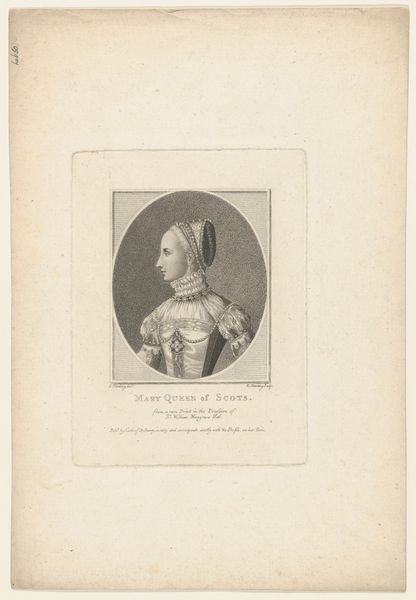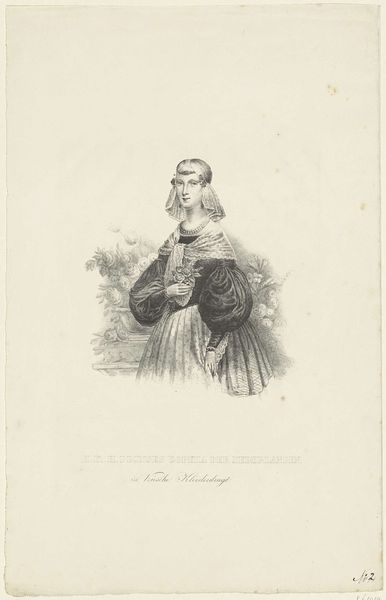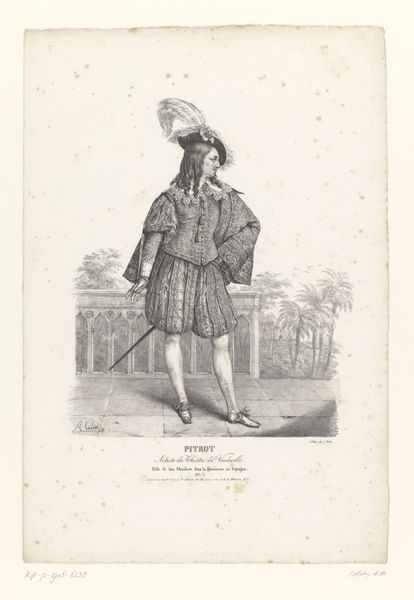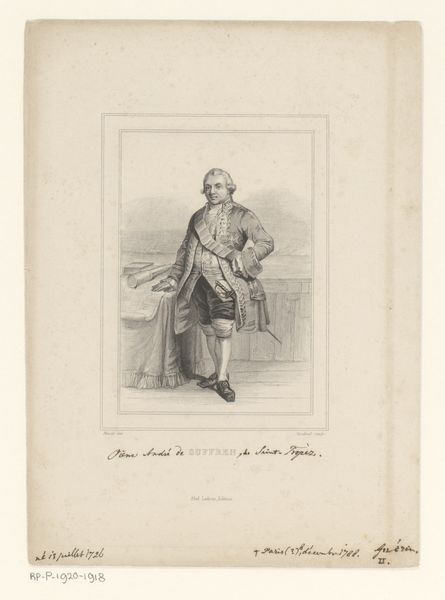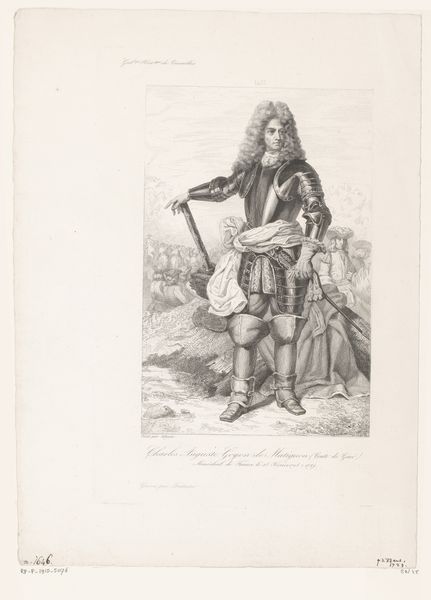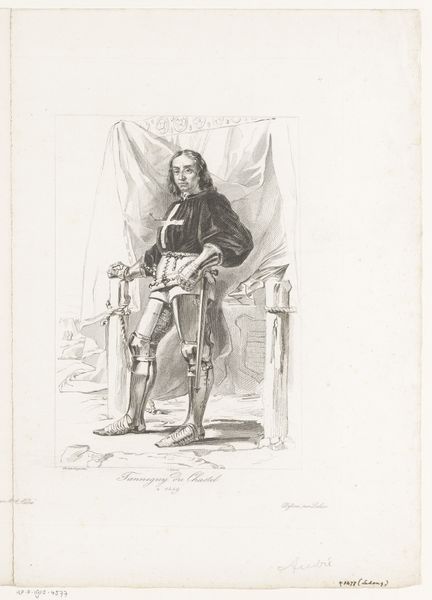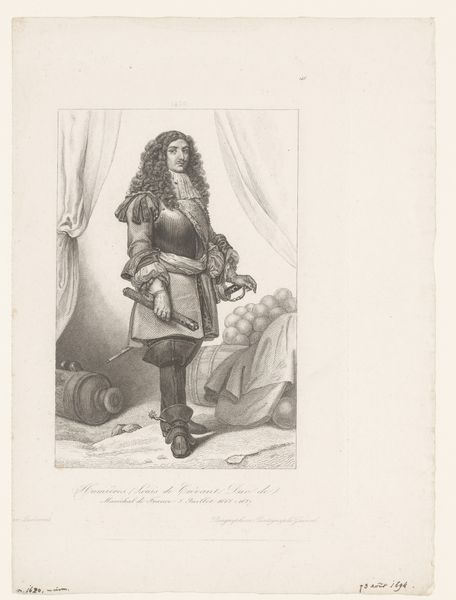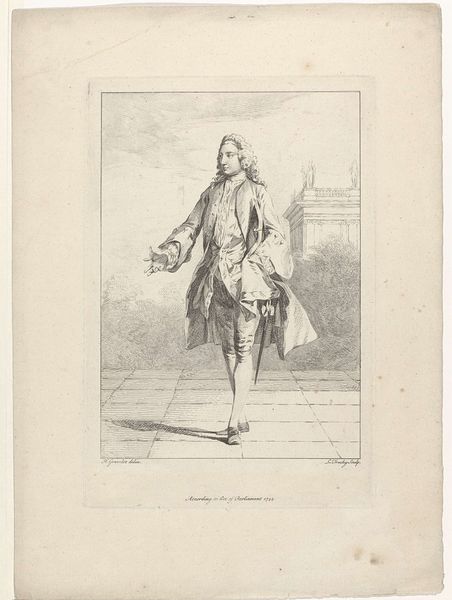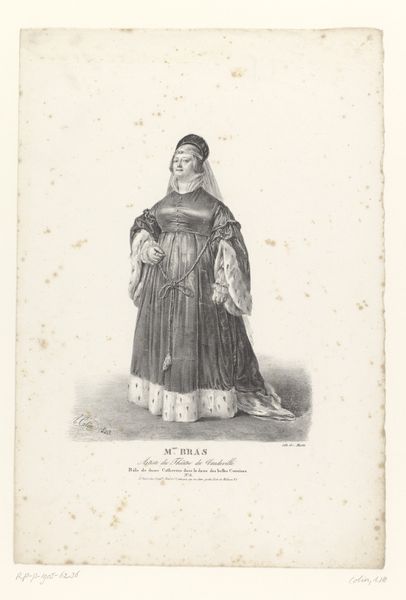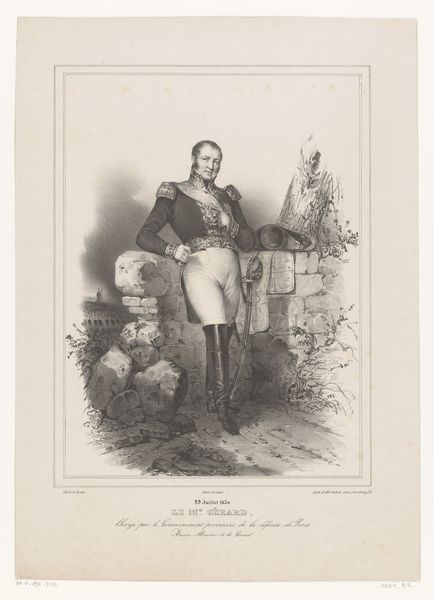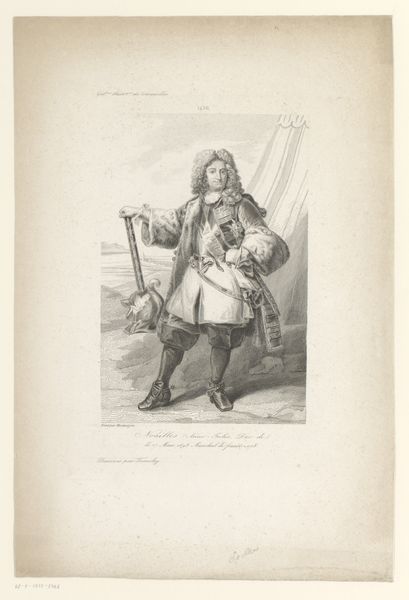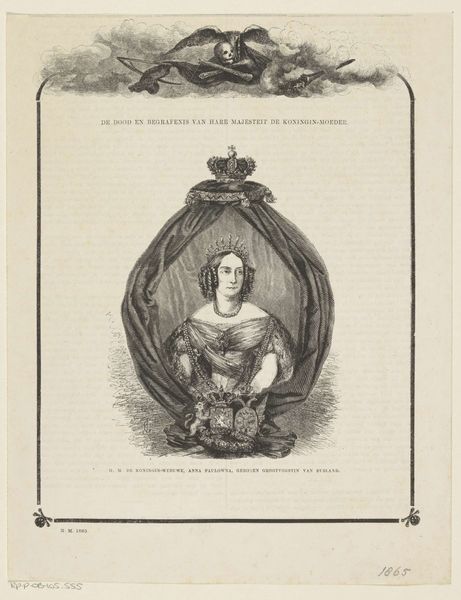
print, engraving
#
portrait
# print
#
figuration
#
history-painting
#
engraving
#
realism
Dimensions: height 270 mm, width 239 mm
Copyright: Rijks Museum: Open Domain
Amédée Félix Barthélemy Geille created this portrait of Abraham de Fabert using an engraving technique sometime between 1802 and 1843. Geille's print captures Fabert, a figure of military and aristocratic identity, in a way that reflects the hierarchical values of his time. Fabert's full armor and confident posture embody traditional ideals of masculinity and power. The portrait is more than just an image of an individual; it communicates the values of nobility, military prowess, and social dominance that were deeply ingrained in European society. Fabert wasn’t born into nobility, so the portrait elevates his status, reinforcing the aspirational narratives of social mobility through military service. As you contemplate this work, consider the historical context that shaped both Fabert's life and Geille's artistic choices. The portrait invites us to reflect on the ways in which art can perpetuate or challenge established norms, and how individual stories intersect with broader societal narratives.
Comments
No comments
Be the first to comment and join the conversation on the ultimate creative platform.
